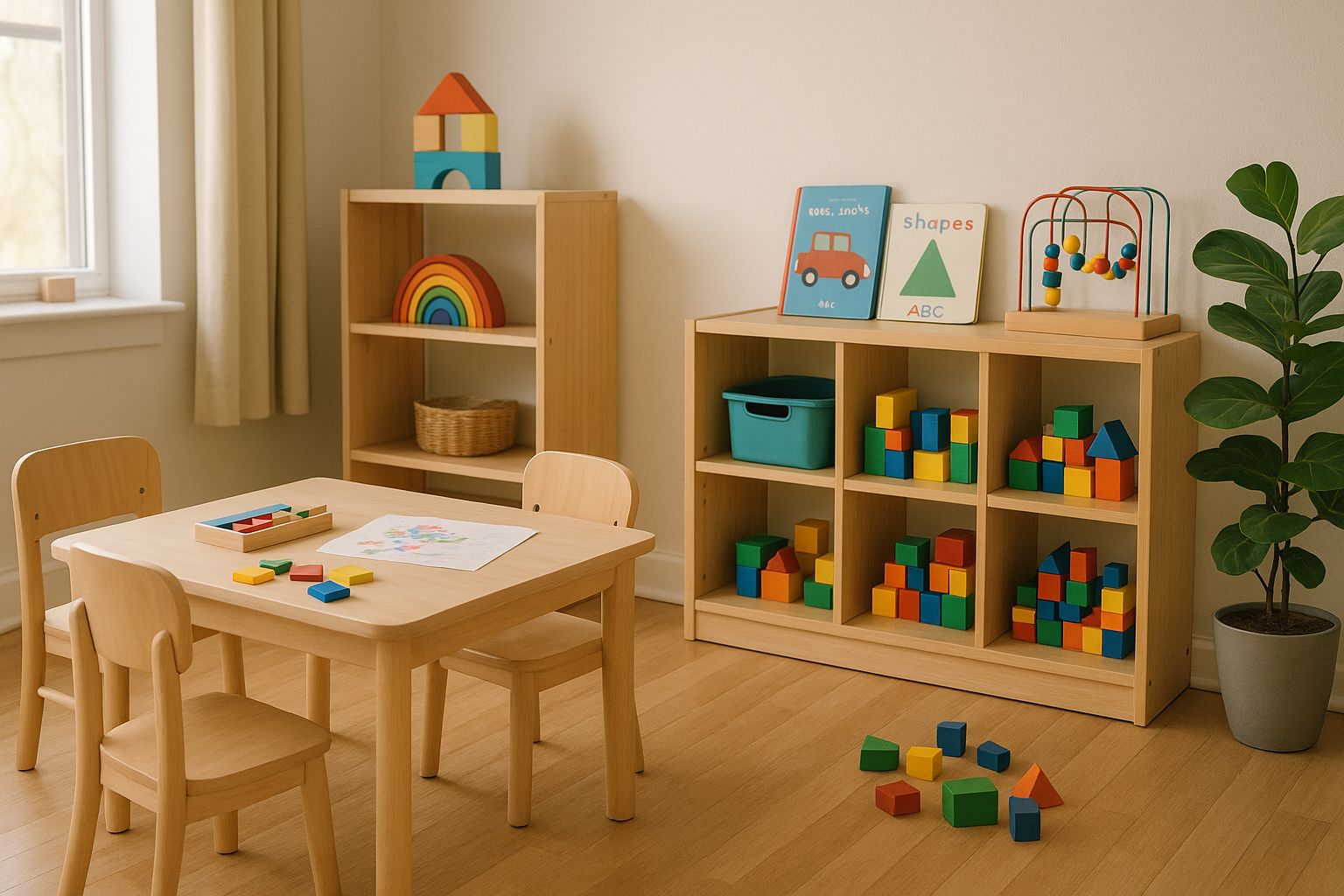A child’s home is their first classroom — and one of the most powerful places for learning, creativity, and growth. Creating a stimulating environment doesn’t mean buying fancy toys or turning your home into a school. It’s about designing spaces, routines, and interactions that encourage exploration, curiosity, and independence in everyday life.
In this article, you’ll find practical and budget-friendly tips to transform your home into a nurturing and inspiring space for your child’s development.
Why a Stimulating Environment Matters
The environment plays a key role in shaping how children learn, behave, and develop. A rich, engaging space invites children to:
- Explore and discover
- Solve problems
- Express creativity
- Build focus and independence
- Feel safe and supported
The good news? You don’t need a big house or expensive materials to create this kind of space. Small, intentional changes can make a big impact.
1. Create Zones for Different Activities
Children thrive when spaces are organized in a way that clearly supports different types of play and learning. Think of your home as a collection of zones — each one inviting a different type of engagement.
Common zones to consider:
- Reading nook: A cozy corner with books, pillows, and soft lighting
- Art and creativity station: Crayons, paper, glue, recycled materials
- Building and construction area: Blocks, LEGOs, or everyday objects
- Pretend play space: Dress-up clothes, play kitchen, puppets
- Quiet time spot: A calm area with soft toys, sensory bottles, or a calming jar
Keep each area simple, accessible, and easy to clean up. Rotate toys and materials every few weeks to renew interest.
2. Let the Child Lead
A stimulating environment respects a child’s interests and allows them to take the lead in their play and learning.
How to encourage child-led exploration:
- Observe what they’re curious about and add related materials
- Avoid over-directing or controlling their play
- Ask open-ended questions: “What do you think will happen next?”
- Allow for unstructured play time
When children have the freedom to choose what and how they engage, their creativity and confidence grow naturally.
3. Make Materials Accessible
If a child can’t reach it, they can’t use it. An empowering environment puts age-appropriate tools and materials within the child’s reach.
Ideas for accessibility:
- Use low shelves or baskets instead of closed cabinets
- Label storage containers with pictures
- Store toys and books at eye level
- Encourage self-serve options for snacks, water, and clean-up tools
Giving children access to their own materials fosters independence, responsibility, and pride.
4. Use Natural Light and Calming Colors
The physical environment affects mood and concentration. Overstimulating spaces (with too many colors, noises, or screens) can lead to distraction and irritability.
Tips for a calm and inviting space:
- Use natural light whenever possible
- Choose soft or neutral tones for walls and large furniture
- Add plants (real or artificial) to bring life and calm
- Minimize clutter and visual noise
- Use rugs, curtains, or cushions to create cozy, defined areas
Children feel more focused and secure in a space that is beautiful, organized, and peaceful.
5. Encourage Curiosity with Open-Ended Materials
Not every toy needs buttons and flashing lights. In fact, open-ended materials — items that can be used in many different ways — are some of the best tools for learning and creativity.
Great open-ended items include:
- Wooden blocks
- Scarves or fabric pieces
- Cardboard boxes
- Nature items (rocks, sticks, leaves)
- Art supplies
- Recycled materials
These invite imagination and experimentation, helping children build problem-solving and storytelling skills.
6. Involve the Child in Creating the Space
Children feel more ownership and comfort in spaces they help create. You don’t have to redesign your home — just include them in the process.
How to include your child:
- Let them decorate a corner of the room
- Ask where they want their toys or books stored
- Create a rotating display of their artwork
- Build simple DIY shelves or bins together
This reinforces the idea that the home belongs to everyone — not just the adults.
7. Foster Connection Through Shared Spaces
While having child-specific zones is great, don’t forget the power of shared environments. Children grow emotionally through connection, and shared routines help them feel safe and loved.
Ideas for shared stimulation:
- Cook together in the kitchen — let them mix, pour, or set the table
- Garden together, even in small pots or containers
- Create a “family art wall” in a hallway
- Play music or dance together daily
- Include a child-sized chair or table in the main living room
When children feel included in the family’s spaces, they become more engaged, cooperative, and confident.
8. Keep It Flexible
A truly stimulating environment is one that grows and evolves with the child. What worked at age 3 won’t work at age 6 — and that’s a good thing.
Tips to keep it evolving:
- Rotate books and toys every few weeks
- Change zones based on new interests
- Store older toys temporarily and reintroduce them later
- Ask for your child’s feedback regularly
Flexibility also means that it’s okay if the environment isn’t perfect. Children are adaptable — and so are you.
Final Thought: The Home as a Foundation for Growth
A stimulating home isn’t built overnight, and it doesn’t require perfection. What matters most is that your child feels welcome to explore, express, and connect. Every small corner, every shelf at their height, every opportunity to make a choice — these are seeds you plant for a lifetime of learning and confidence.
By intentionally shaping your home with love and curiosity in mind, you’re not just filling a space — you’re shaping a world where your child feels capable, curious, and cared for.
